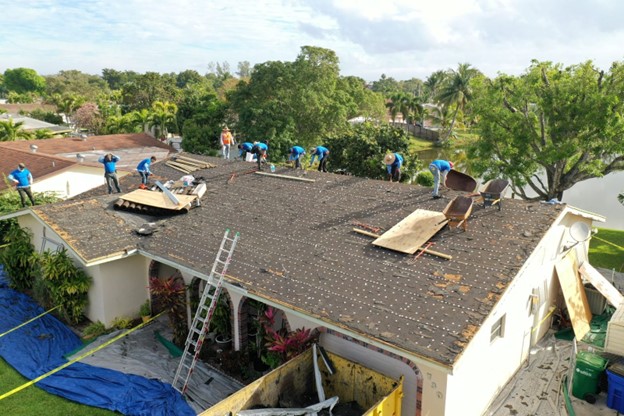When 150 mph winds tear through your neighborhood, your roof becomes your home’s first line of defense. In hurricane-prone areas, the right roofing choices can mean the difference between minor repairs and total home devastation. To help homeowners safeguard their houses, we’ve compiled an essential guide to hurricane-resistant roofing.
Why Standard Roofs Often Fail in Hurricanes
Traditional roofing wasn’t built for extreme weather. Most conventional roofs can handle winds up to 60 mph — far below the intensities seen in major hurricanes. The main weak points include loose shingles, poor attachment methods, and inadequate structural support. When one section fails, it creates a chain reaction that can tear off entire roof sections.
Key Components of Hurricane-Resistant Roofing
In contrast to the standard roofs, hurricane-impact roofing is created with higher safety standards in mind. However, it’s important to note that a great roof is not the only solution necessary to protect your home from such weather. Specialists in the Florida Home Improvement Associates (FHIA) can provide you with a detailed consultation about hurricane-resistant home upgrades.
Here’s what makes such roofs more durable in times of nature’s fury.
Strong Materials Matter
- Metal roofing: Stands up to 160 mph winds when properly installed.
- Concrete tiles: Heavy and durable, but need extra structural support.
- Modified bitumen: Excellent for flat roofs in high-wind zones.
- Impact-resistant shingles: Made with special polymers to resist flying debris.
Professional Installation Techniques
The best materials won’t help if they’re installed incorrectly. Key installation requirements include:
- Six nails per shingle instead of the standard four
- Ring-shank nails that grip like teeth into the wood
- Proper nail placement within the manufacturer’s marked zones
- Enhanced underlayment attachment.
Roof Shape and Design
Your roof’s geometry plays a crucial role in wind resistance:
- Hip roofs (four-sided slopes) perform better than gable roofs.
- Lower slope angles (4/12 to 6/12 pitch) reduce wind uplift.
- Shorter roof overhangs limit areas where wind can push up.
- Strategic roof bracing adds critical structural support.
Steps to Upgrade Your Roof
- Get a professional assessment: Start with an inspection from a licensed roofer who knows local hurricane codes. They’ll check your current roof’s weak points and suggest specific improvements.
- Check local building codes: Hurricane zones have strict requirements. In Florida, for example, roofs must withstand 130-mph winds in many coastal areas. Know your local standards before starting any work.
- Choose the right system: Consider your budget, home’s architecture, and local weather patterns. A good roofer will explain your options and help you pick the best combination of materials and techniques.
- Focus on the details: Small things matter in hurricane protection:
- Sealed roof deck systems
- Hurricane clips and straps
- Enhanced flashing around chimneys and vents
- Properly installed drip edges
- Water-resistant barriers under all materials.

Maintenance: Keeping Your Protection Strong
Even the best hurricane-resistant roof needs regular care:
- Inspect after every major storm
- Replace damaged materials immediately
- Clean gutters and drainage systems regularly
- Check attic ventilation yearly
- Test roof attachments before hurricane season.
The Bottom Line
Hurricane-resistant roofing isn’t just about stronger materials — it’s a complete system that works together to protect your home. While the upfront costs are higher, the protection these systems offer can save you thousands in repairs and give you peace of mind during storm season.
Remember: hurricanes test every weak point in your roof. One small oversight during installation or maintenance can compromise the entire system. Work with qualified professionals who understand hurricane-zone requirements and have a track record of successful installations in your area.
Your roof shields everything below it. When investing in hurricane-resistant roofing, you’re not just buying better materials — you’re protecting your home, belongings, and family against the most powerful storms.


